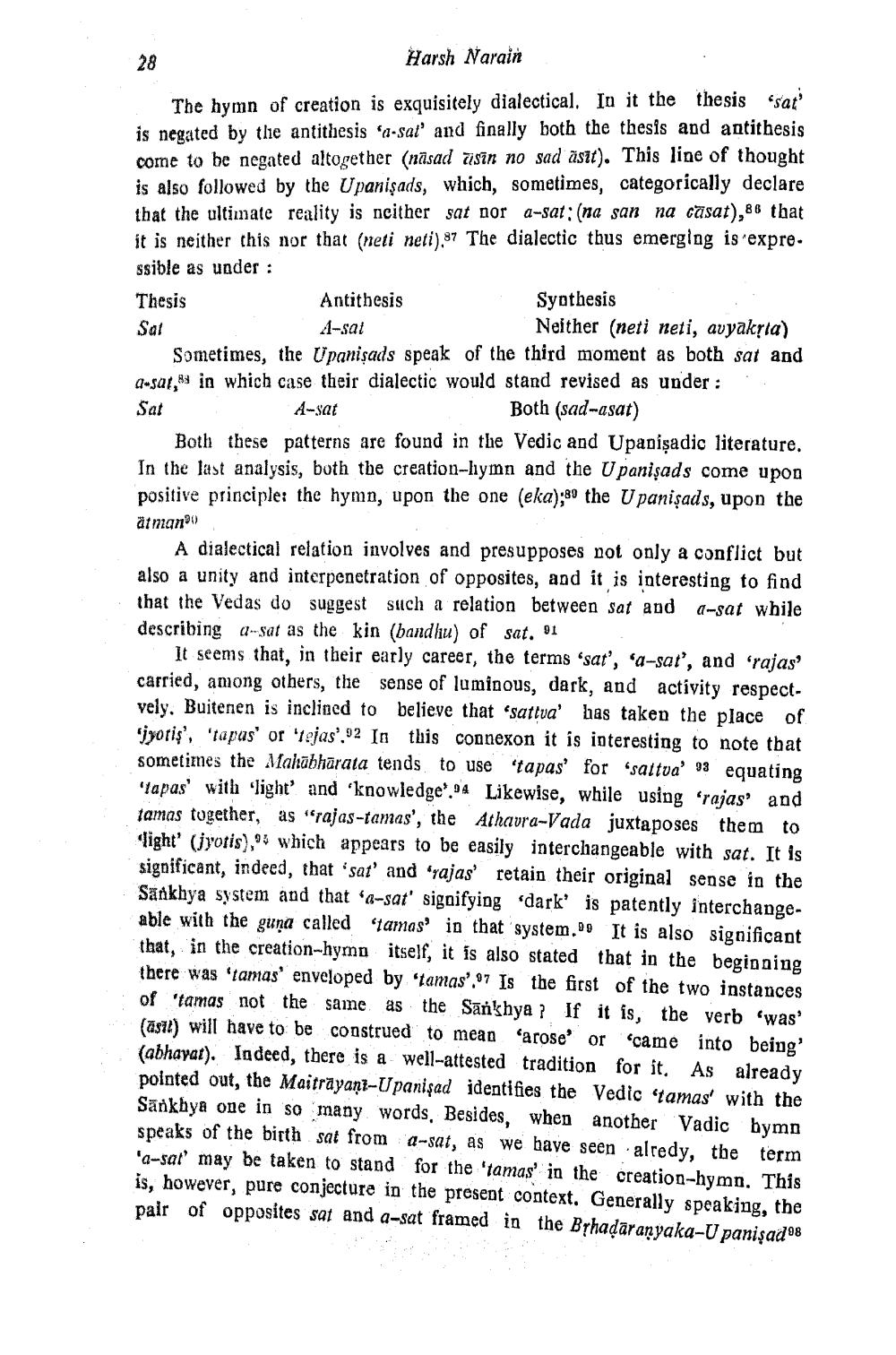________________
Harsh Narain
thesis "sar The hymn of creation is exquisitely dialectical. In it the is negated by the antithesis a-sat' and finally both the thesis and antithesis come to be negated altogether (nasad visin no sad äsit). This line of thought is also followed by the Upanişads, which, sometimes, categorically declare that the ultimate reality is neither sat nor a-sat: (na san na casat),88 that it is neither this nor that (neti neti),87 The dialectic thus emerging is expre. ssible as under : Thesis Antithesis
Synthesis Sat A-sat
Neither (neti neti, avyakria) Sometimes, the Upanisads speak of the third moment as both sat and 0-301, in which case their dialectic would stand revised as under: Sat A-sat
Both (sad-asat) Both these patterns are found in the Vedic and Upanişadic literature. In the last analysis, both the creation-lıymn and the Upanişads come upon positive principle: the hymn, upon the one (eka):89 the Upanişads, upon the atmano
A dialectical relation involves and presupposes not only a conflict but also a unity and interpenetration of opposites, and it is interesting to find that the Vedas do suggest such a relation between sat and a-sat while describing a-sat as the kin (bandhu) of sat. 01
It seems that, in their early career, the terms 'sat', 'a-sat', and 'rajas' carried, among others, the sense of luminous, dark, and activity respectvely. Buitenen is inclined to believe that "sattva' has taken the place of
jyoris', 'tapus' or 'tejas'.92 In this connexon it is interesting to note that sometimes the Mahabharata tends to use 'tapas' for 'sattva' 93 equating 'Tapas' with light and knowledge.94 Likewise, while using rajas' and tamas together, as "rajas-tamas', the Athavra-Vada juxtaposes them to light' Gjyotis), which appears to be easily interchangeable with sat. It is significant, indeed, that 'sat' and 'rajas' retain their original sense in the Sankhya system and that 'a-sat' signifying 'dark' is patently interchangeable with the guna called 'tamas' in that system. It is also significant that, in the creation-hymn itself, it is also stated that in the beginning there was 'tamas' enveloped by 'tamas".97 Is the first of the two instances of 'tamas not the same as the Sankhya ? If it is, the verb 'was (asil) will have to be construed to mean 'arose' or 'came into being' (abhayat). Indeed, there is a well-attested tradition for it. As already pointed out, the Maitrāyant-Upanişad identifies the Vedic 'tamas' with the Sankhya one in so many words, Besides, when another Vadic bymn speaks of the birth sat from a-sat, as we have seen alredy, the term 'a-sat may be taken to stand for the 'tamas' in the creation-hymn. This is, however, pure conjecture in the present context. Generally speaking, the pair of opposites sat and a-sat framed in the Byhadaranyaka-U panişad08




